Today tomato is a common food crop for the home gardener because it’s easy to grow and usually provides an abundant harvest.While it is possible to buy tomatoes in the grocery store year-round, vine-ripened tomatoes are only available during the growing season.
Globally, there are more than 2,000 tomato cultivars available. These cultivars may be divided into different categories, such as slicing tomatoes, grape or cherry tomatoes and paste tomatoes. Tomatoes are also divided into two other categories, determinate and indeterminate plants, which determine the size of the plant and vines. The average yield of each tomato plant, however, varies depending on plant type, growing technique and environmental conditions.
Types of High Yield Tomatoes
Tangerine
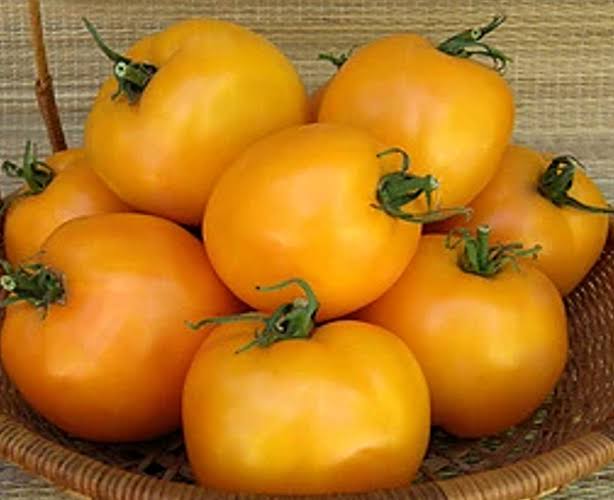
The Tangerine tomato plant is very disease resistant and drought tolerant, and reportedly does well in hot and humid temperatures, but is a good choice for cooler and shorter growing seasons as well. The high-yielding, regular-leaf Tangerine tomato plant is a determinate variety, characterized by its short vines and compact growing habit, reaching an average height of four or five feet.
The tomato fruit is of medium to large size averaging six to eight ounces in weight, with thin smooth skin and a glowing orange color. It has a high flesh-to-juice ratio and its narrow seed pockets have minimal seeds. Its flesh has a low to moderate acid level and a complex tangy yet sweet flavor.
Chocolate Stripes
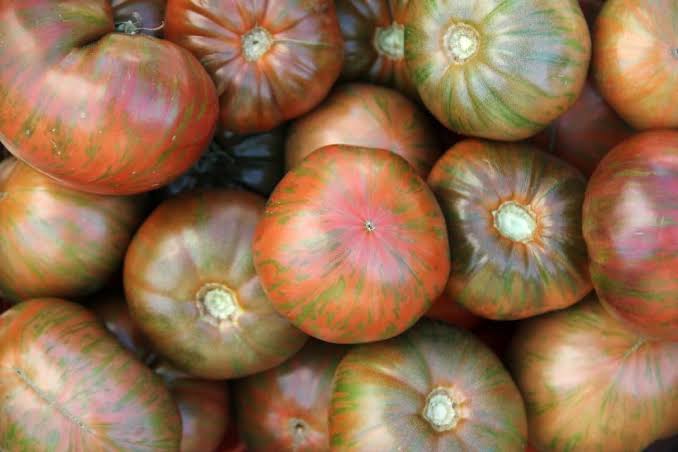
Chocolate stripes tomato is a type of heirloom tomato that has a rich, sweet flavor and an unusual appearance from which it gets its name. Chocolate stripes tomatoes produce fruit throughout the growing season, making them a tasty and interesting addition to your vegetable garden.
The outside of a chocolate stripes tomato is a dark brown color with olive green, lime green or vivid orange stripes. The flesh of a chocolate stripes tomato is reddish brown and has a sweet flavor. The chocolate stripes tomato is similar in size to a beefsteak tomato and can reach weights up to 1 pound.
Mountain Spring
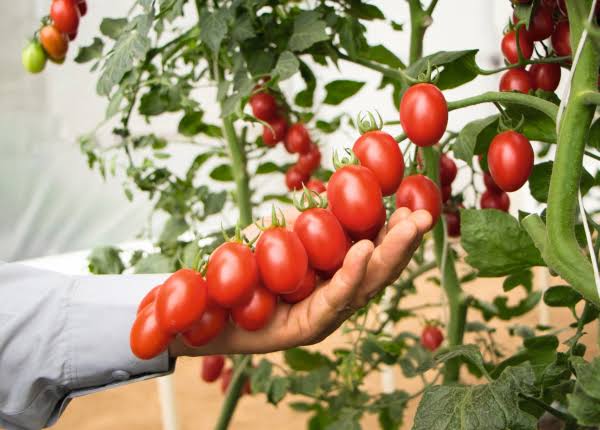
Mountain Spring is a determinate, bush-type tomato. This means that it stops growing at the end of the growing season, and produces all its fruit at roughly the same time. Mountain Spring tomato plants are compact, making them a good option for growers with limited space.
The fruit of Mountain Spring tomatoes is smooth and globe-shaped, and typically reaches a weight of about 9 ounces. With a deep red color, both externally and internally, Mountain Spring tomatoes are firm at the ripe stage and then soften gradually. These tomatoes generally take 65 to 70 days to mature — though this depends on climate — making them early- to mid-season tomatoes.
Orange Oxheart
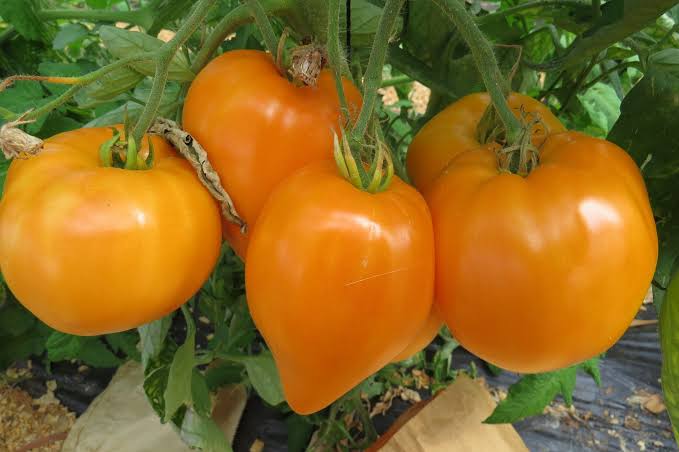
The Orange Oxheart is a heirloom tomato variety that grows on vines that can reach heights of 5 to 7 feet.The plants are slow-growing, yet extremely productive and produce dozens of tomatoes by the end of the growing season.The cultivar originated in the Virginias, where it was a favorite for sauces and canning.
Its fruits are a large variety, capable of weighing 6 to 18 ounces, and have a distinct, heart-like shape with broad, rounded shoulders curving to a slightly tapered base. The skin is smooth, semi-thin, and glossy, ripening to a rich, golden yellow-orange with some green patches around the stem. Underneath the surface, the yellow flesh is dense, tender, and aqueous with a smooth consistency. The flesh also encases a few pockets of seeds, but the variety is known for being nearly seedless and is primarily filled with solid flesh.
Better Boy
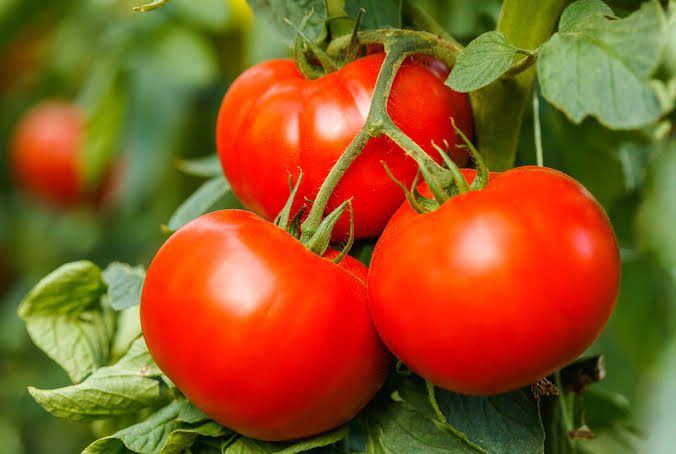
Better Boy tomatoes are a favorite among home gardeners for their medium to large red fruits weighing about 16 ounces. This highly disease-resistant tomato is an excellent addition to any garden, with an ability to withstand verticillium and fusarium wilts, alternaria, grey leaf spot and root knot nematodes. “Better Boy” tomatoes reach about 5 feet tall, with an indeterminate growth habit; you can expect the first fruits 72 to 75 days after setting them in the garden.
“Better Boy” tomato plant set a Guinness World Record by producing more than 340 pounds of tomatoes from a single plant, though you aren’t likely to harvest quite that much from your “Better Boy.” You can, however, expect an abundant crop of deep red, 1-pound slicers that are ready to harvest in just 70 to 75 days. Given that this variety is of indeterminate type, it will need staking, and it will produce fruit continually until the first frost.
Also Read: Difference Between Determinate and Indeterminate Tomatoes
Celebrity
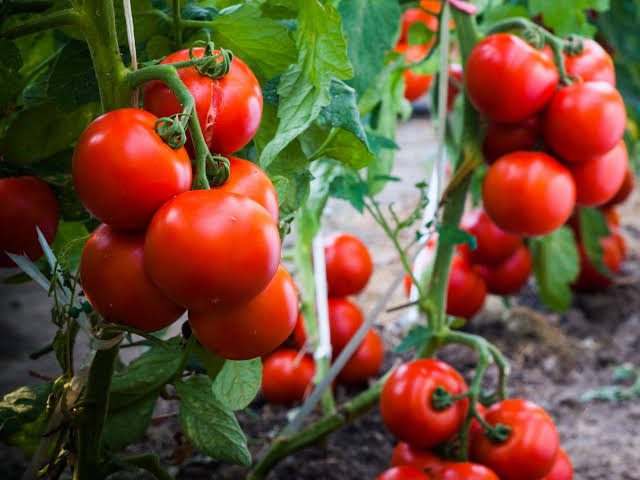
The Celebrity tomato cultivar is a hybrid that produces long fruit-bearing stems holding 20 or more very plump, robust tomatoes. Fruits weigh approximately 8 oz., and are 4 inches across. Plants need caging or staking, and produce fruit throughout the growing season. “Celebrity” is resistant to verticillium and fusarium wilts, nematodes and tobacco mosaic virus. Growing a flavorful tomato in containers or raised garden beds can ensure you have a wealth of the meaty fruit available for sauces, sandwiches and salads.
Cherokee Purple
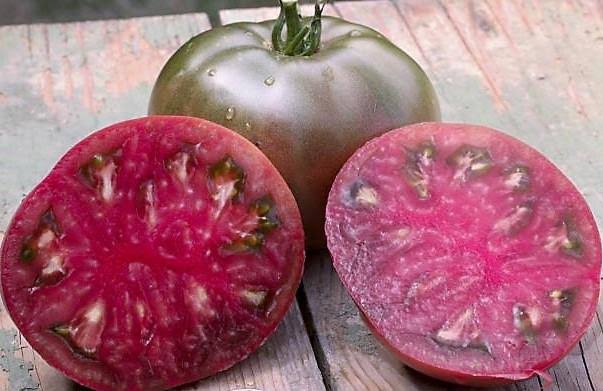
Cherokee Purple is the name of a old variety of tomato that develops a fruit with a deep, dusky-rose color while maintaining a somewhat greenish hue near the stem when mature for eating. The deep crimson interior and clear skin combination give it its distinctive color. It was one of the first of the darker color group of tomatoes sometimes described as “blacks.”
Its fruit, usually ripens in 75 to 90 days after transplant. Cherokee purple tomatoes are often available as transplants in garden centers and nurseries.If you wish to grow the green or chocolate varieties of Cherokee tomato, you will need to start your own transplants from seeds.
Solid Gold
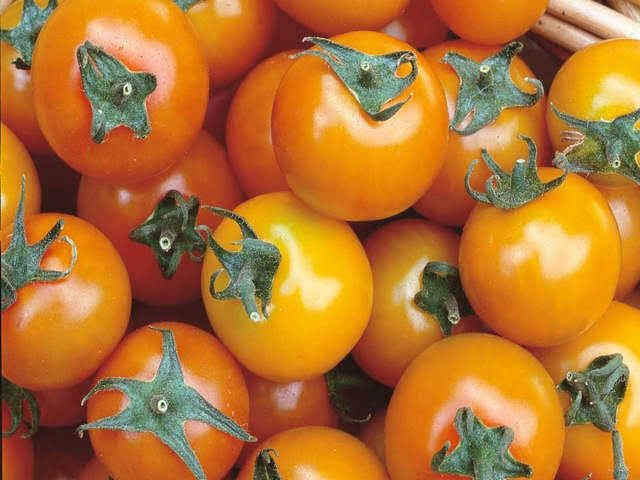
“Solid Gold” is an indeterminate hybrid that produces golden-yellow grape tomatoes. The 1-inch golden-orange fruit of “Sungold” ripens quickly, in just 60 days. A popular choice for all climates because it produces in warm or cold conditions, “Sungold” bears from early spring to late autumn. Notable for its very sweet taste, this cultivar stays firm longer than other cherry tomato varieties. Once fruit production begins, the abundant tomatoes will be ready to harvest twice a week. “Solid Gold” is resistant to fusarium wilt.
Mr. Stripey
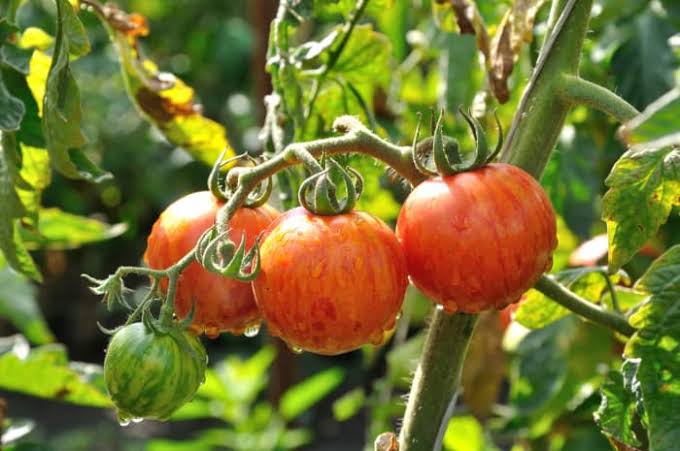
“Mr. Stripey” is an heirloom tomato that has low-acid, uniquely colored fruit. This indeterminate plant is a vigorous grower and even without pruning, it reaches up to 10 feet tall with fruit maturing 55 to 85 days after planting. The fruit grows between 1/2 to 2 pounds. The ideal temperature for growing these red and yellow striped tomatoes is between 50 to 95 degrees Fahrenheit in full sun locations.
Super Sweet 100
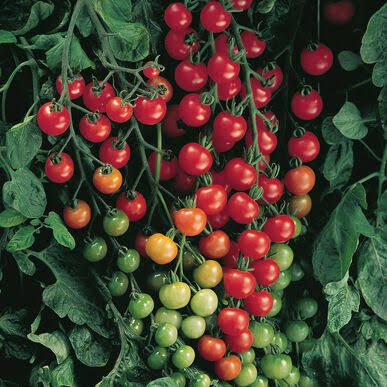
Developed to improve the disease resistance of the home garden favorite “Sweet 100,” while maintaining its terrific taste, the indeterminate cherry tomato bears loads of 1-inch 1-ounce red fruits. The variety takes 65 days to first fruiting but continues to bear till the first frost. The hybrid resists strains of fusarium and verticillium wilts, dreaded soilborne fungal diseases.
Big Beef
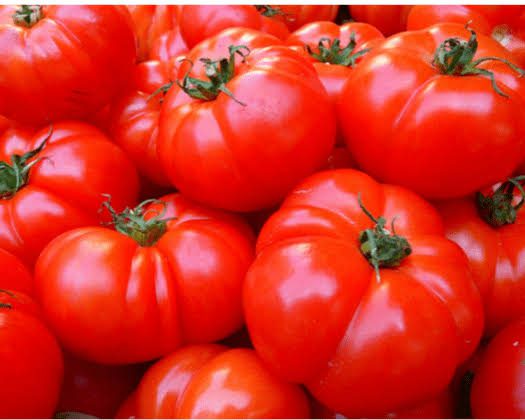
This large red hybrid, 4 to 6 inches in diameter and up to 12 ounces, is ready for harvest in 70 days. The Big Beef variety features a long, bountiful harvest period and a sweet flavor. Noted for its firmness and resistance to splitting and disease, this is an ideal choice for a home gardener and for a beginner to growing tomatoes. Because the tomatoes are so large, the plant will require staking or caging.
According to the University of Missouri Extension, the popular “Big Beef” is extremely disease resistant, and it won an All-America Selections award in 1994. It is resistant to verticillium and fusarium wilts, nematodes, alternaria stem canker and tobacco mosaic virus.
Carmello Tomato
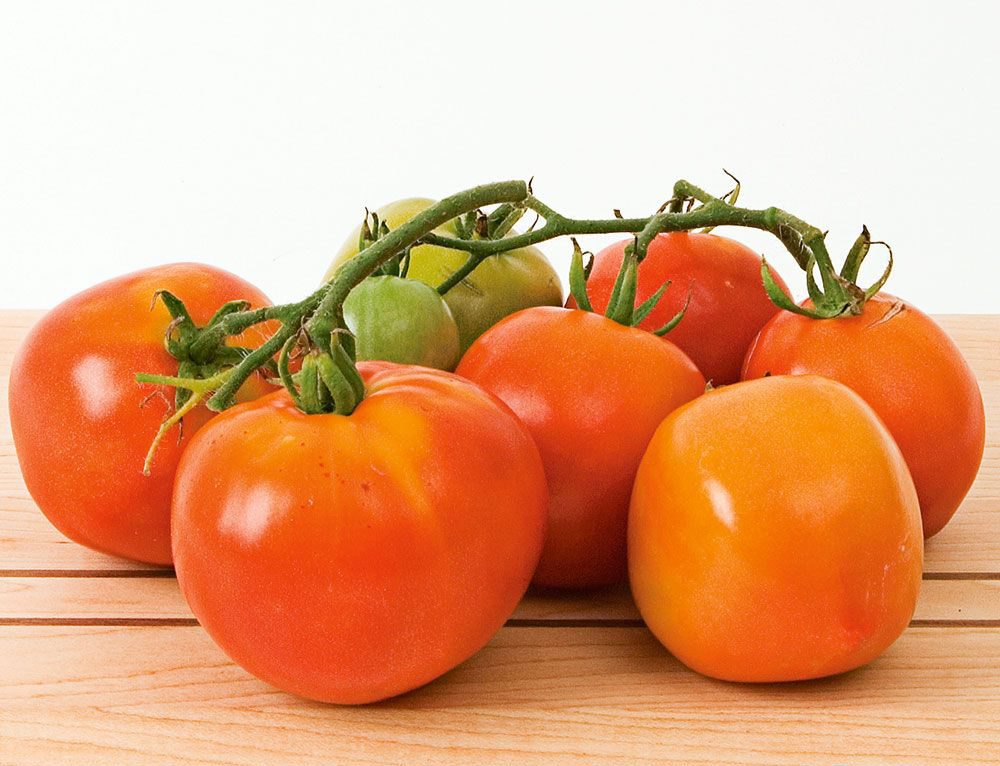
‘Carmello’ is a highly productive variety that takes just 70 days and bears enormous crops even in cooler weather.
Also Read: Facts About Roma Tomatoes
Better Bush

The Better Bush tomato plant is one of the most popular hybrids because of its large-sized fruits and compact plant size that makes it perfect for container-growing. The fruits of this plant produce over a period of two months, making it also one of the most consistent producers of tomatoes.
Early Wonder
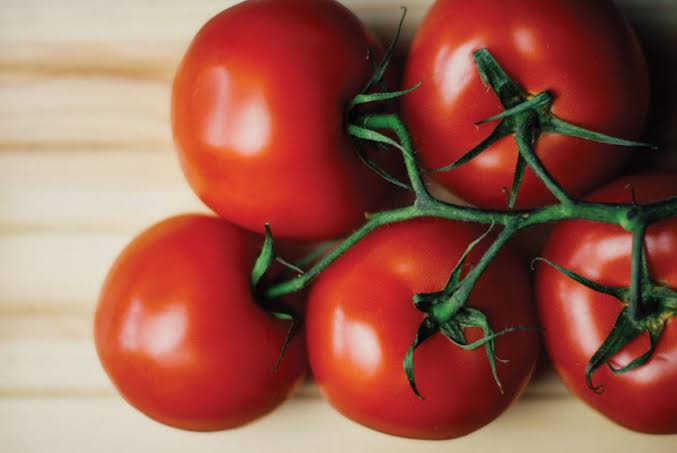
The determinate Early Wonder variety is another popular high yield choice for growing in the garden. It bears small dark pink fruits, about six-ounce and the plant stands four-feet tall when fully grown. Early Wonder tomato plants blossom and its tomatoes ripen very early in the season, at around 55 days, which is why some gardeners love this plant.
Cherry Bomb

Cherry Bomb is a bright red bite-sized tomato that is known for its high resistance to late blight. It has a firm texture with a sweet and well-balanced authentic cherry tomato flavor. The indeterminate, or vining, Cherry Bomb tomato plant can grow to an average of six to eight feet. These vigorous plants produce high yields of the uniform oval-round fruits, which have a unique calyx that can serve as an aesthetic display when left attached.
Black Krim
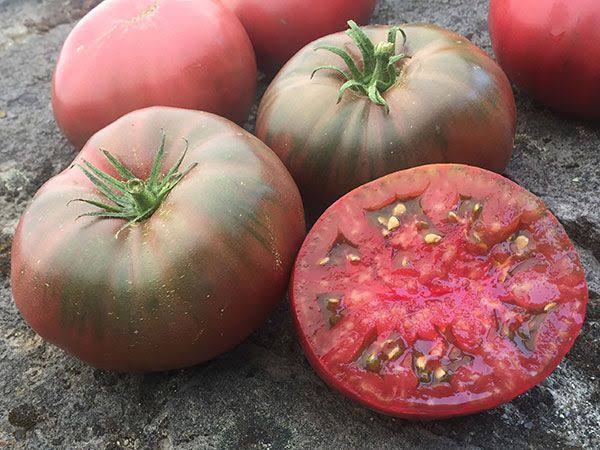
‘Black Krim,’ also known as ‘Black Crimea’ and ‘Noire de Crimée was developed in the Crimea region of Russia, near the Black Sea. ‘Black Krim’ produces large dusky red to maroon fruits with greenish-brown shoulders. Black Krim’ is an indeterminate cultivar that requires 70 to 90 days after transplanting in the garden to produce fruit.
Supersteak
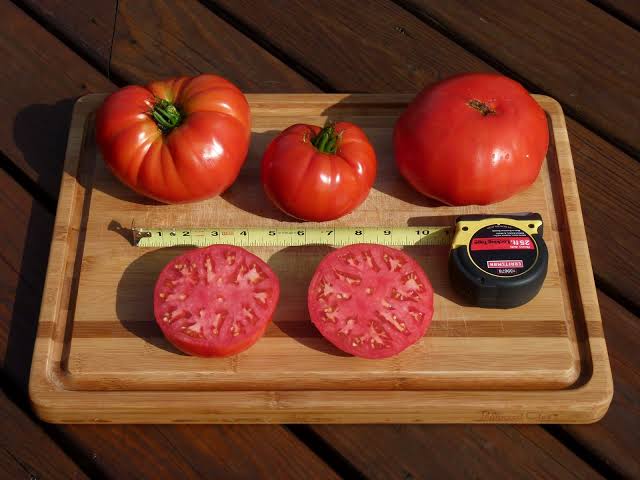
“Supersteak” is an indeterminate plant that produces fruit in about 80 days. As an indeterminate, the plant continues growing throughout the season, getting taller and producing more fruit. The plant can reach a full height of 36 to 40 inches, eventually spreading to a width of 18 inches or more.
Growing these plants is straightforward, especially if you give them the room they need to grow well.When planning your garden, allow at least 36 inches between “Supersteak” plants, spacing that gives the plant room to expand all summer long.
Jumbo Hybrid

The red-skinned “Jumbo” hybrid tomato also grows well in greenhouses, producing five to seven clusters of fruit. Typically, the fruit of the “Jumbo” tomato will be ready to harvest about 80 days after germination. Jumbo hybrid tomatoes can grow in containers and work well for canning, juicing and using in salads.
Stupice

Stupice is one of the most abundant producers of fruit ever bred. Originating in the Czech Republic this Heirloom variety is one of the earliest and most cold hardy varieties available growing well outdoors, typically producing in 60 to 65 days. A compact indeterminate equally at home in the ground or smaller container garden producing heavy yields of 2-4 ounce sweet tangy fruits even in poorer summers. The variety grow well in cool and foggy areas, unusual for a normally sun-loving plant. Their sauce is rich and full-bodied.
Also Read: Types of Mushroom
Red Grape Tomatoes
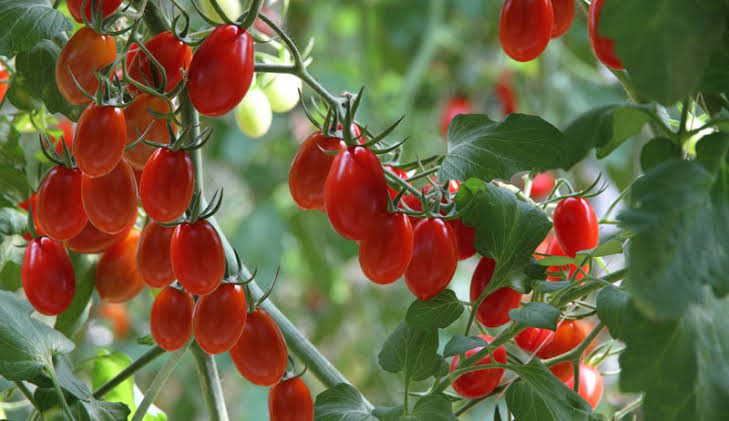
Red Grape tomatoes are highly productive and are grown year-round in some climates, creating a steady supply for commercial cultivation. Like most tomatoes, grape varieties grow during the warm summer season and don’t tolerate frost.
Red Grape tomatoes are small in size, averaging 1 to 2 centimeters in diameter and 2 to 5 centimeters in length, and have an elongated, oblong to oval shape. The tomatoes also grow in large bunches of approximately twenty fruits.
Green Grape

Green Grape tomato plants are disease and heat resistant, and they produce high yields of the blemish-free fruit in clusters of four to twelve that hang on the vines like grapes.Green Grape tomatoes are considered a sister variety to green zebra, but are said to be sweeter in taste.
Green Grape tomatoes have a unique green-gold color when they are fully ripe. They average two to four centimeters in diameter and are rounded with a slightly oblong shape, like that of a grape. Their juicy interior flesh is lime green in color, and offers a rich combination of sweet and spicy flavors with minimal acidity.
Also Read: Types of Pumpkin
Russian Big Roma
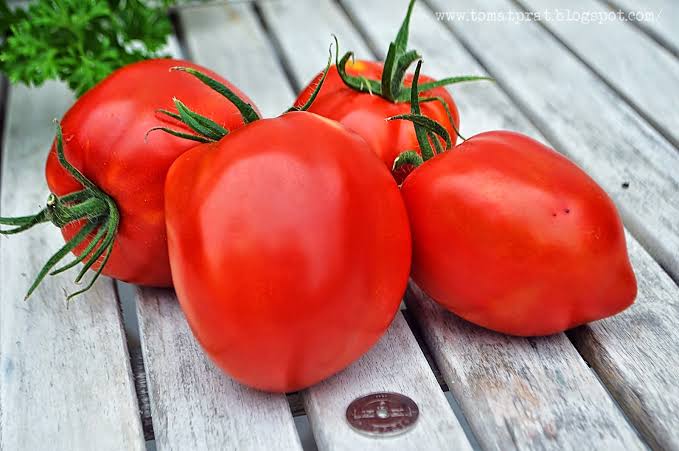
“Russian Big Roma” is an indeterminate variety, producing fruit throughout the growing season.This variety produces large, deep red, paste-like tomatoes with dense flesh and excellent flavor. Russian Big Roma is commonly used both for canning and producing tomato paste because of its slender and firm nature.
Jaune Flamme

The Jaune Flamme tomato is an heirloom variety, hence it is open-pollinated and its seed will grow true to its parents. It is an indeterminate, or vining, plant that will continue to grow, set fruit, and ripen throughout the growing season, and it can reach an average of five to six feet, which is why it is often recommended for staking or caging.
Its fruit is a small round tomato, roughly the size of a golf ball, weighing an average of three ounces. It has thick yellowish-orange skin, with a rich and meaty interior flesh that is mottled with red streaks. Its flavor is citrusy and fruity when raw, and is further intensified when the tomato is roasted or slowly dried.
Also Read: Heirloom tomato varieties
How To Successfully Grow High Yield Tomato Varieties
Simply planting a high-producing variety does not guarantee the tomato plant will produce a prolific crop. Specific growing conditions are essential to optimize the yield of tomato fruit. Whether raising plants from seed or purchasing from a nursery, you need to start with healthy plants, ideally between 8 and 10 inches tall with dark green leaves. Plants should be set out in the garden as soon as possible after any danger of frost has passed, so that plants will have the maximum amount of time to produce fruit.
Choose Your Location
An appropriate location is important. Tomatoes love the sun, so choose planting sites that receive a minimum of 10 hours of sun. Also, look for airy planting spots, as good circulation helps prevent problems with fungal diseases. Another trick is not to plant tomatoes in the same place year after year. Instead, alternate the location of tomato beds annually, and if plants show signs of disease problems, do not use these plots to grow tomatoes for at least three years.
Soil
Soil rich with nutrients and organic matter is another secret to growing healthy tomato plants. Amending with compost is enough for good soil, but for heavy clay and sandy soil, first add compost or organic manure and then use a balanced fertilizer when transplanting seedlings. Avoid any fertilizer with high levels of nitrogen, which will cause excessive foliage growth but few tomatoes.
Fertilizing
When tomatoes grow to golf-ball size, side-dress each plant with 1 tablespoon of 10-10-10 fertilizer or ammonium nitrate. Repeat the application again three and six weeks later. When applying fertilizer, don’t get any on the plant’s leaves. Water the plant well after fertilizing. Fertilizers, like manure, that are high in nitrogen may cause an excess of foliage without tomatoes.
Add a Layer of Organic Mulch
Spread 1 to 2 inches of organic mulch around the base of the tomato plants. Use straw, dried grass clippings or shredded leaves to prevent the quick evaporation of the soil moisture. Mulching also slows the growth of weeds around the tomato plants. Pull any weeds that survive the mulch by hand. Cultivating near the tomato plants can accidentally damage the stems and roots.
Support
Support the plants with either wood stakes or wire cages. Stakes should be 6 feet tall for ‘Big Beef’ tomatoes, and 1 to 2 inches wide, stuck into the ground several inches from the plant. Tie the plant to the stake with a flexible cord. Wire cages should have spaces large enough to pick the fruit through the cage.
Also Read: Types of Kale Varieties
Pruning
If your tomato plant has grown rapidly but stopped putting out flowers and fruit, you may need to prune some of its branches. If you don’t prune tomatoes regularly, the plants will develop extra branches, called suckers. These branches are called suckers because they take away the energy the plant needs to create and ripen fruit. Look for suckers growing in the crotch between two established branches.
To remove a sucker, pinch the base of it with your fingers and wiggle it back and forth until it snaps off. If your plant is mature and very large, you may also remove larger side stems that aren’t supporting blossoms or fruit. This allows the plant to focus more energy on fruit development.
Control Pests
Check tomatoes periodically for pests, and practice control methods when necessary. Hornworms are large caterpillars that take their name from the sharp horn on one end of their bodies. These insects can strip tomato plants of their leaves quickly. Control hornworms by simply plucking them from the tomato plants. To kill a hornworm, drop it in a bucket of water. Aphids are tiny green, yellow, black, red or brown insects that may be found on the undersides of the tomato leaves. Wash aphids away with a heavy stream of water, but be aware constant applications of water to tomato leaves may invite disease. You can also use pesticides designed for use on vegetables.